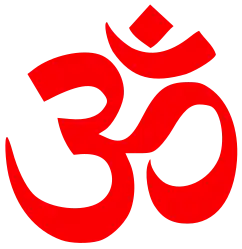Lakshmi Tantra
The Lakshmi Tantra one of the Pāñcarātra texts, which are dedicated to Goddess Lakshmi and the worship of Narayana (Vishnu), which forms a part of the Agamas. It was compiled sometime between the ninth and twelfth centuries. The text not only glorifies Goddess Lakshmi (the Shakti of Vishnu-Narayana) but also women in general (as beings created in the cherished form of Lakshmi); it advocates their worship.[1][2]

Contents
The Lakshmi Tantra deals mainly with Pāñcarātra philosophy and cosmogony as well as mantra sastra. A minimum is said about the ritualistic side of worship. Iconography for Lakshmi-Narayana and Vishnu’s Vyūhas is discussed. Temple architecture and temple worship are totally omitted. The text also ignores public festivals, death rites and expiatory rights. This silence indicates that the Lakshmi Tantra concerns itself only with the individual worshiper, who desires to be released from the miseries of worldly existence.[3]

The Lakshmi Tantra is shown to have distinct similarities with the Pratik Rahasyam of Devi Mahatmya, showing an agreement of Vaishnavas with Shakta-lore, which is extremely rare. The episode describing how the Supreme Shakti, Adi Mahalakshmi, transforms into her complete incarnation, Mahalakshmi or Mahasri, who is shown holding a mace, a shield, a matulinga fruit, and a bowl. She is golden in color and on her crown she holds a lingam and a multi-headed snake which symbolizes the Trideva; linga meaning Shiva, yoni meaning Vishnu, and the snake representing Brahma. She represents the Rajas Guna. From here it is quite similar to what is seen in the Pratik Rahasyam, Mahalakshmi creates Mahakali/Mahamaya and Mahasaraswati/Mahavidya who represent the Tamas Guna and Satva Guna respectively. However, unlike in the Pratik Rahasyam, where the Devis create the Trimurti and Tridevi on their own, in Lakshmi Tantra, Adi Purush, or Param Vasudev, creates three of Chatur Vyuhas, Pradyumna, Aniruddha, and Sankarshana, (Vasudeva is Para Vasudev). There Pradyumna is linked with Mahasri, who create Brahma and Lakshmi(named as Padma), Sankarshana is linked with Mahamaya, creating Shiva and Saraswati, and Aniruddha and Mahavidya is linked together, creating Vishnu and Gauri/Parvati. Here it shows how Male and Female energies link to create Srishti, or life.[4][5]
The text precisely expounds the specifics of the philosophy of qualified monism Vishishtadvaita but it's also seen that it is much inspired from the philosophy of Pratyabhijna of Kashmiri Shaivism propounded by Abhinavagupta. The text also reveals traces of Mahayana Buddhism. The influence of the Bhagavad Gita is also clearly apparent and passages from it have sometimes been quoted literally.[6]
References
- Yellow, Abode Mahiparaa Loka Affilation Shakti Concert / Bhairav Aakaasha Bhairava Day Friday Colour. "Siddhi Lakshmi". Siddha Pedia. Retrieved 2021-11-30.
- "Lakshmi Tantra : Art by Guru Charan". AdiShakti. 2020-11-17. Retrieved 2021-11-30.
- Sri Mahalakshmi: The Goddess of Wealth. 76, Eldams Road Chennai 600 017, India: Tattvãloka. 2005. pp. 43–52.
{{cite book}}: CS1 maint: location (link) - "Lakshmi Tantra". Goddess Vidya. Retrieved 2021-11-30.
- Pattanaik, Devdutt. "The ancient story of goddess Lakshmi—bestower of power, wealth and sovereignty". Quartz. Retrieved 2021-11-30.
- Gupta, Sanjukta (2000-01-01). Laksmi Tantra: A Pancaratra Text. Motilal Banarsidass. ISBN 978-81-208-1734-0.
| Part of a series on |
| Hindu scriptures and texts |
|---|
 |
| Related Hindu texts |